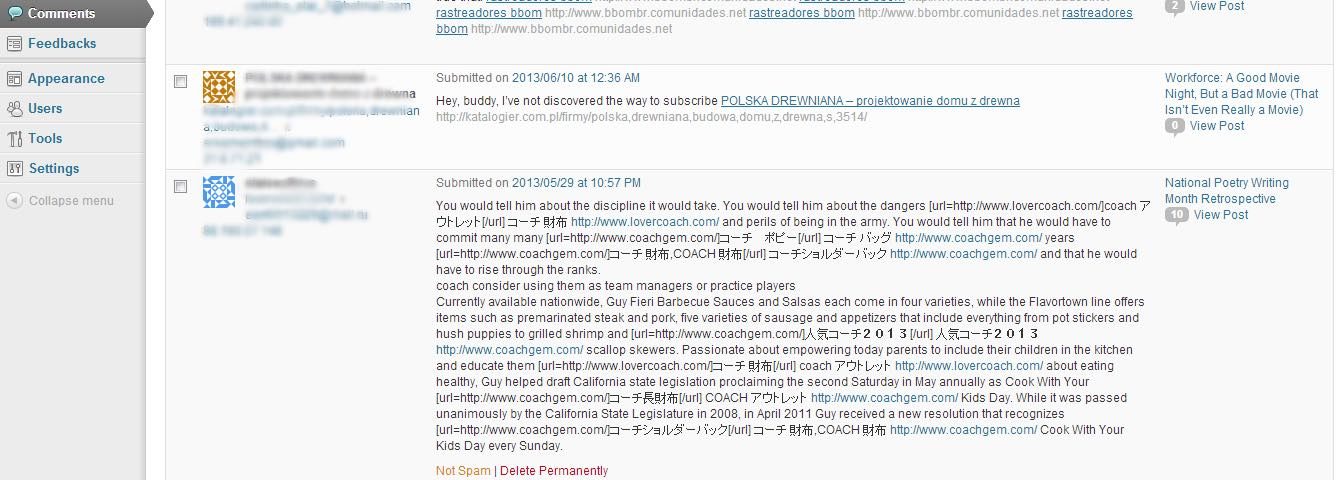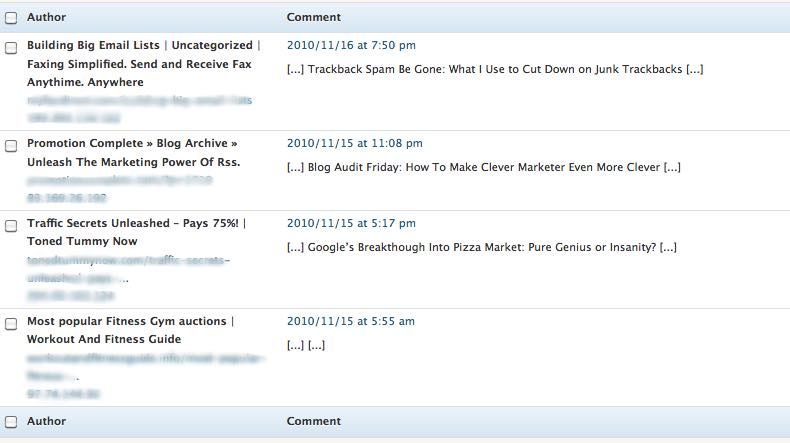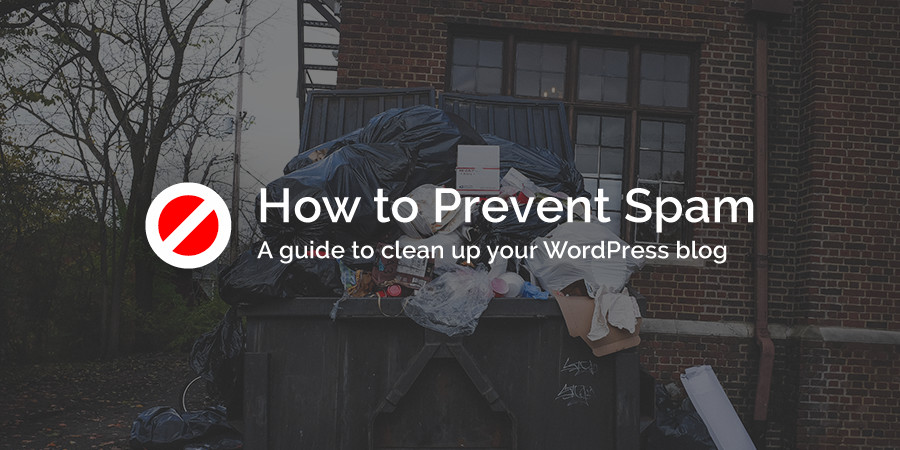Su sección de comentarios le brinda una manera conveniente de interactuar con los lectores de su sitio Web. Desafortunadamente, abrir su sitio web a comentarios significa que tendrá que lidiar con el spam. A menos que be el tipo de bloguero que no solicita comentarios por medio de de comentarios y trackbacks / pingbacks, tendrá que lidiar con eso en algún momento u otro.
But the question is as? A medida que los robots de spam (y los spammers humanos) se vuelven más sofisticados, es cada vez más difícil mantener su Blog limpio de contents inapropiado e irrelevante.
Fortunately, WordPress viene con funciones integradas y complementos gratuitos para ayudar a controlar y combatir el spam, incluidas Akismet y blacklists de comentarios. Aún mejor, hay muchos complementos de terceros disponibles para brindar protección adicional contra correo no deseado.
In this post, we'll take an in-depth look at the problem of WordPress blog spam, the negative impact it can have on your site if left unchecked, and how it can be managed and prevented. At the same time we will take a look at the tools available in WordPress to combat this problem. Finally, we'll finish with some plugin recommendations to take your spam moderation to the next level. Let's dive in!
What is WordPress comment spam

Automated spam comments like these can invade your WordPress database.
It can be exciting when new comments appear on your blog. Regardless, that first flush of excitement often fades when you see inappropriate responses to your content. These responses, of course, at the same time are known as spam. The dictionary simply defines it as «irrelevant or inappropriate messages sent over the Internet to a large number of users". It sounds good to me.
El spam de blogs nace de la misma familia que el spam de correo electrónico tan familiar, pero tiene su propio target único: para obtener backlinks. Ya sea por medio de de un comentario de blog, trackback o pingback, el propósito del spam de blog es publicar un link en su sitio que apunte a otro sitio. El sitio en cuestión suele ser irrelevante para su nicho y, frecuentemente, de mala calidad.
These unsolicited messages are a reality if you allow commenting on your posts. Luckily, identifying it is relatively simple, as it generally takes one of three main forms.
1. Spambots
These are comments that are published automatically by means of a script or a bot that scours the web in search of targets to flood with junk comments. There is no direct human involvement in these comments and they are generally quite easy for the human eye to spot. Spambots are probably the biggest culprit for irrelevant comments.
2. Manual comments
This is when humans are hired to manually post comments on the sites. The quality of these comments can range from blatantly obvious to questionable, which of course represents a major headache for anyone trying to weed out spam from their site. These will almost always include links in the comments and can be a bit more sneaky than bots (we've seen comments with questionable links added to blanks in the comment text).
3. Trackbacks and pingbacks
Según la definición de Google, un trackback es «uno de los tres tipos de métodos de linkback para que los autores de sitios web soliciten una notificación cuando alguien vincula uno de sus documentos». Para nuestros propósitos, puede hacerse cargo que los pingbacks son esencialmente lo mismo. Probablemente hayas visto trackbacks antes. Existen como una lista de enlaces, de forma general dentro o debajo de la sección de comentarios en una publicación de blog. Para los propósitos de los spammers, el objetivo es simple: mencionar una publicación de blog en su propia publicación y obtener un enlace.
Each of these types of spam is problematic and will often receive more than one category. Together, they can clog up your comment section and cause all kinds of problems.
How comment spam affects your WordPress site

Spammers use trackbacks to link to irrelevant sites.
Puede considerar que el spam no es más que una molestia. A pesar de todo, si no se marca, puede tener consecuencias negativas para su sitio web. A la vez de brindar una mala user experience a sus lectores, el spam de comentarios puede dañar su sitio de muchas maneras, provocando:
- Loss of search engine rankings. Google targets bad links on your site for ranking purposes, including in comments.
- Potential risks to your readers. Links in spam comments can lead to malicious sites.
- Site speed and loading time issues. Too many comments can overload your WordPress database and slow down your site.
All blogs that allow commenting are vulnerable to spam. Having an action plan to reduce and combat it is the only way to protect your site and your readers.
How to combat WordPress comment spam
While comment spam is unavoidable, there is good news. You can combat this pest by moderating your comments and using Built-in WordPress tools.
First, make sure you've turned on comment moderation. Doing so will allow you to approve any comment before it is published on your site. If you don't have time to review each comment, you can set parameters based on several factors. As an example, under Settings> Discussion you can:
- Mark a comment as spam based on the number of links it has.
- Commenters on the blacklist in reaction to the above spam.
- Disable trackbacks and pingbacks.
- Allow only registered users to post comments.
No olvides el arma más grande de tu arsenal predeterminado: los complementos. Hay toneladas de excelentes complementos gratuitos y de Open Source que puede agregar a su instalación de WordPress para verificar los comentarios y filtrar cualquier cosa que parezca spam.
Reduce comment spam on your WordPress site with a plugin
One of the best things about using WordPress is how easy it is to customize it. When it comes to blog comments, you can use WordPress anti-spam plugins to beef up your security. Here are three plugins to help you control comment spam.
1. Akismet

¿Cómo no mencionar a Akismet? Este complemento viene instalado de forma predeterminada en los blogs de WordPress y es de uso gratuito para los bloggers personales (con una subscription comercial mensual establecida en $ 5 por mes y soluciones empresariales disponibles en $ 50 por mes).
When using a "general" spam solution like Akismet, you must agree that some legitimate comments may be marked as spam. It is simply a cost of blogging and using an automated spam blocker. The problem is mainly due to human spammers. One person's spam is another's legitimate comment, so if humans can't agree 100% of time, what chance does a plug-in have?
Nonetheless, for the most part, Akismet does a great job. It keeps a massive amount of spam at bay on my blog, and only the occasional legitimate comments are detected. At the same time, it takes care of trackback spam at the same time, a great advantage.
Outstanding Features:
- Block comment and trackback spam.
- Automatically check all comments.
- Comment history so you can check which comments were blocked by the plugin or moderators.
- Includes a "Discard" setting to automatically block the worst spam.
Price: Akismet is a free plugin and it is feasible that it is already installed on your blog.
2. Antispam Bee

This plugin uses the 'honey pot' technique to invisibly catch bots. Humans will not see captchas, but bots will, and will subsequently be caught as spam. Antispam Bee acts as a firewall to block both automated and targeted spam. Since you block these comments before they hit your database, you never have to worry about them slowing down your site.
Outstanding Features:
- Block trackback and pingback spam.
- Avoid spam in the front of the site, so it never reaches the WordPress database.
- Works with all major form building tools.
Price: Antispam Bee is a free add-on.
3. Titan Anti-spam

Anti-spam uses invisible captchas to block all spam from your comments. The pro version at the same time blocks spam sent manually. While this plugin does a great job of stopping spam comments, it does not protect other types of forms on your site. This means that you may want to use this plugin with something else for additional form protection. Regardless, it's still an excellent lightweight option.
Looking for more protection options? Anti-Spam Pro includes additional settings for manual spam protection, so it can automatically prevent comments that rank high on a spam point scale (with more than a specified number of links, flagged spam words or words).
Outstanding Features:
- Block trackbacks by default.
- Prevent automated spam from reaching your WordPress database.
- The Pro version blocks manual spam.
Price: Anti-Spam is free and the pro version is available for $ 25.
4. WPBruiser

WPBruiser promete funcionar desde el momento en que lo instale. Este complemento combina la protección contra ataques de fuerza bruta con el bloqueo de comentarios no deseados. Puede usarlo para proteger todos sus formularios y sus lectores nunca deberán de usar un captcha. En general, es una opción completa y fácil de usar.
Outstanding Features:
- Includes protection against brute force attacks.
- It enables you to block malicious IP addresses.
- It is compatible with WordPress Multisite.
- It offers extensions that work with the main form tools.
Price: WPBruiser is a free plugin with optional extensions.
5. Hide trackbacks
This last plugin is extremely straightforward, as it just does what the title says - it hides trackbacks. Even though you can disable trackbacks entirely, it is useful to simply hide them if you want to keep track of who links to you. This plugin removes trackbacks from your interface, but still makes it possible for you to view them in your WordPress dashboard.
Price: Hide Trackbacks is totally free.
El spam de comentarios es una simple realidad en Internet, a menos que planee deshabilitar los comentarios por completo. Proteger su sitio contra comentarios inapropiados es crucial para su salud y rendimiento generales. Al eliminar los comentarios de spam, puede mantener limpia su base de datos, mantener una experiencia de Username sólida y mejorar la participación.
Have a question about managing spam on your WordPress site? Or tips to add to the list? Let us know in the comment section!






